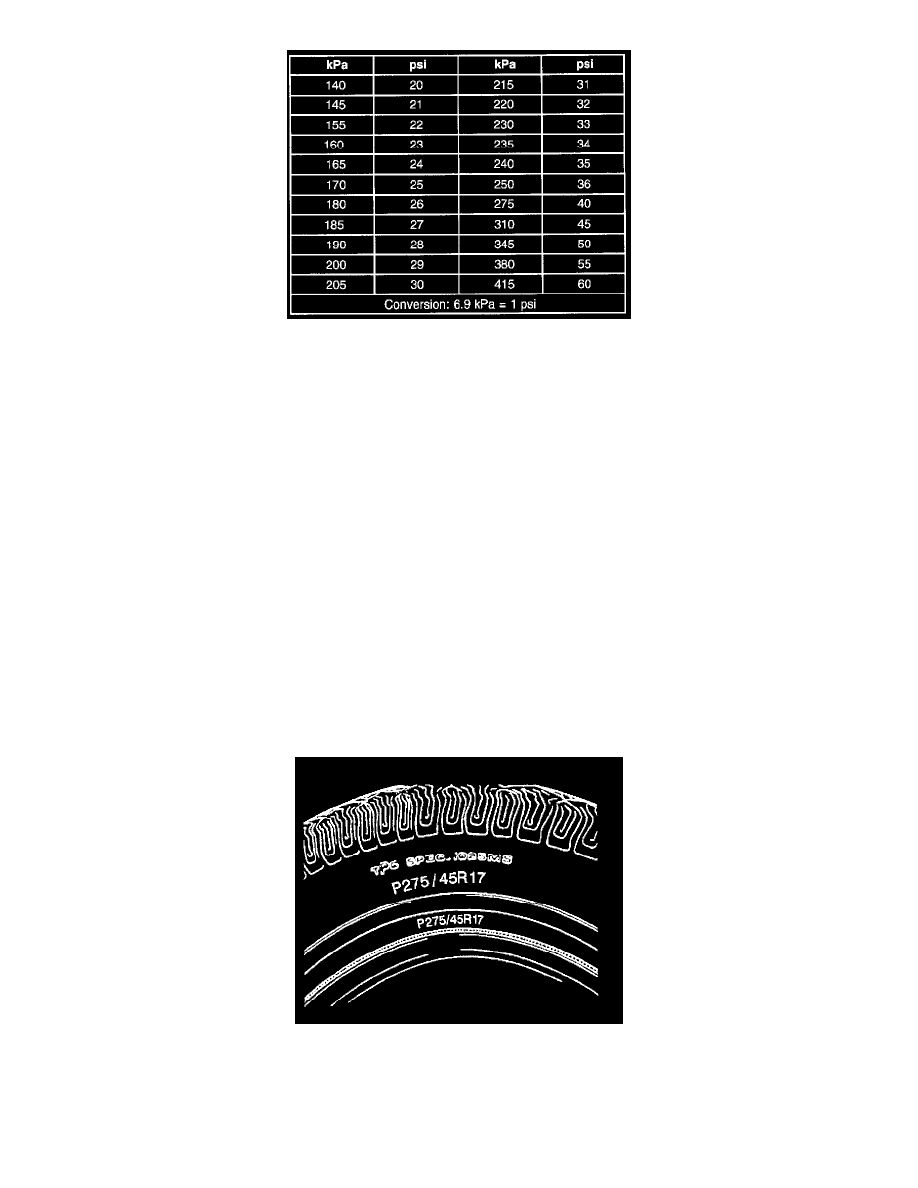Sunfire L4-2.2L VIN F (2002)

Tires with a higher than recommended pressure can cause the following conditions:
^
A hard ride
^
Tire bruising
^
Rapid tread wear at the center of the tire
Tires with a lower than recommended pressure can cause the following conditions:
^
A tire squeal on turns
^
Hard steering
^
Rapid wear and uneven wear on the edge of the tread
^
Tire rim bruises and tire rim rupture
^
Tire cord breakage
^
High tire temperatures
^
Reduced vehicle handling
^
High fuel consumption
^
Soft riding
Unequal pressure on the same axle can cause the following conditions:
^
Uneven braking
^
Steering lead
^
Reduced vehicle handling
Refer to the Tire Placard for specific tire and wheel applications and tire pressures.
All Seasons Tires Description
Most GM vehicles are equipped with steel belted all-season radial tires as standard equipment. These tires qualify as snow tires, with a higher than
average rating for snow traction than the non-all season radial tires previously used. Other performance areas, such as wet traction, rolling resistance,
tread life, and air retention, are also improved. This is done by improvements in both tread design and tread compounds. These tires are identified by
an M + S molded in the tire side wall after the tire size. The suffix MS is also molded in the tire side wall after the TPC specification number.
The optional handling tires used on some vehicles now also have the MS marking after the tire size and the TPC specification number.
